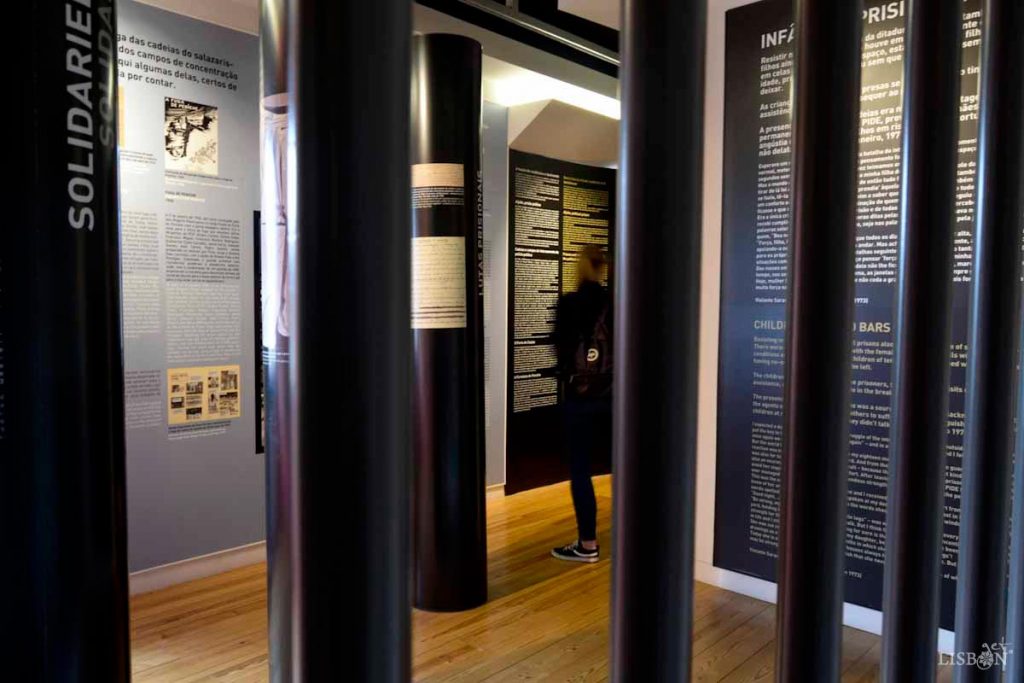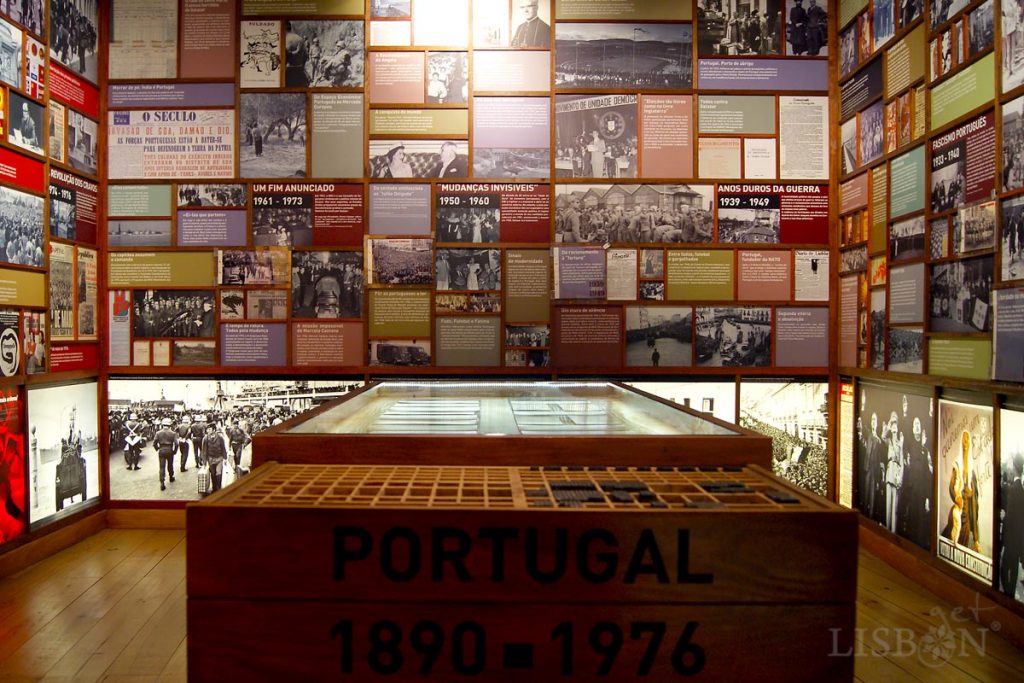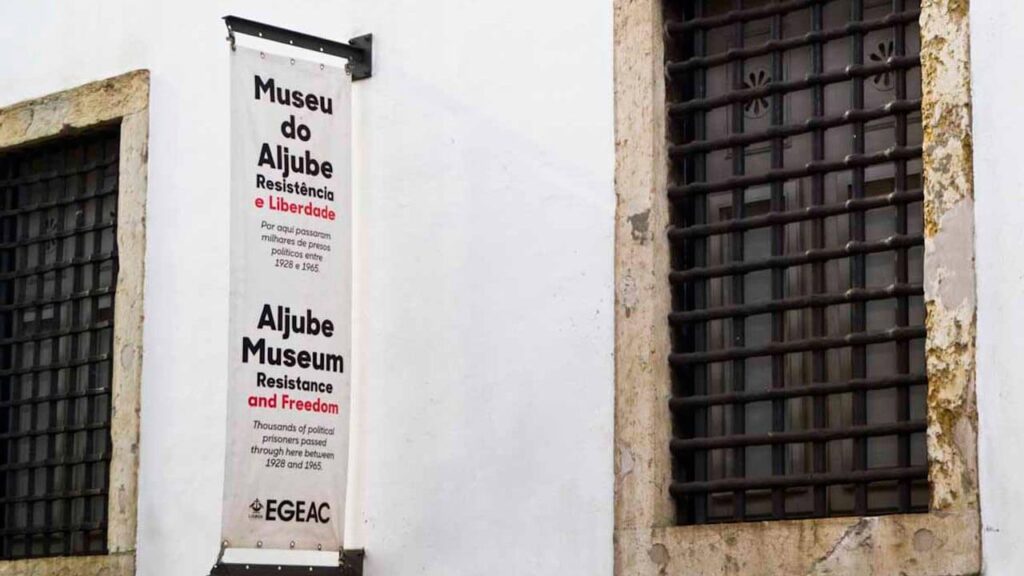Original article published on 24 April 2019
On the occasion of another celebration of the April 25, 1974 revolution, we present to you a very significant space, the Museum of Aljube – Resistance and Freedom.
It was also to mark the month of April that we introduced you to the GNR Museum, which you can visit at the Carmo Barrack, where the main action of the day of the revolution took place and the 25th of April 1974 Landmarks in Lisbon.
It’s important to get to know the facts and the places of the relevant events of history, but it is equally fundamental to know the causes of these events. For that reason, today we bring you the musealisation of memories and testimonies of the resistance and combat of the dictatorship, in favour of freedom and democracy.
The dictatorial regime that ran the country between 1926 and 1974 was marked by the censorship, persecution, torture, imprisonment and exile of its political opponents. It’s necessary that these facts don’t fade into oblivion and are passed on to those who didn’t experience it.
For these intolerable practices to not be repeated; for the testimony of those who resisted to be valued and never lost; for the freedom that has been given to us isn’t put at risk, education is necessary for a conscious society.
The Museum of Aljube – Resistance and Freedom exists since 25 April 2015 with this mission!
Visiting this space is a must and won’t certainly leave you indifferent.
All content is available in English and there is even the option to schedule guided group tours in English and in French.
The Building Aljube

The Museum of Aljube – Resistance and Freedom is installed in an imposing building right next to the Lisbon Cathedral, on the way to the Castelo neighbourhood.
It is a construction from the 16th century, erected upon ancient Roman period structures, but its name comes from the Arabic ‘al-jubb,’ which means dry well, cistern, dungeon, or prison.
Destined to the residence of an archbishop, whose coat of arms can still be seen in the façade, from the mid-17th century, this building became a prison. It was an ecclesiastic prison until the mid-19th century, then it was the female section of the Limoeiro Prison and, from 1928 to 1965, it was the political prison of the dictatorship.
Between 1928 and 1965 around 30.000 political prisoners passed through this place.

Here, they were interrogated and tortured by the political police PIDE and then awaited to be judged in the court of Santa Clara or of Boa Hora, being then sentenced and sent to the prisons of Caxias and Peniche or exiled to the concentration camp of Tarrafal in Cape Verde.
What better space could be chosen to preserve the memory of the combat and resistance to the authoritarian regime?
Perhaps only the PIDE’s installations in Rua António Maria Cardoso in the heart of Chiado where the interrogations and tortures took place. However, this place was unfortunately sold to be transformed into a luxury condominium.
This fact led to the indignation of former political prisoners and anonymous citizens, which joined the movement Não Apaguem a Memória (directly translated to “Don’t Erase the Memory”). Although it wasn’t able to save this space, it brought the attention to the problem of the destruction of the places of memory and the need to preserve them and transforming them into museums. Thus, the Ministry of Justice handed over the installations of the Aljube to the City Council of Lisbon in order to open a museum.
Exhibition of the Museum of Aljube – Resistance and Freedom

The rehabilitation and adaptation of the building to become a museum, project of the architect Graça Dias, are notable. Notice the choice of colours and organisation of the space, directly related to the inherent message of the museum.
The Museum of Aljube – Resistance and Freedom has 6 floors, five with exhibitions (from-1 to 3), and the last floor with an auditorium and a free-access cafeteria where the visitor can enjoy a magnificent view over the Tagus River and the Lisbon Cathedral.


Floors -1 and 0

On the floors -1 and 0 the visitors get in contact with the patrimonial history of the Aljube and some archaeological vestiges. It is also the space where the temporary exhibitions that the museum promotes successively, which reflects its dynamism, take place.
Here the architect left symbolically the mark of the place of the parlour, the only connection of the prisoners with the outside world.
Here some weddings took place, since the prisoners could only be visited by family members, which didn’t include girlfriends, fiancés or any non-marital partnership. Among them was the exchange of rings between the former President of the Republic Mário Soares and Maria Barroso that shortly before had married by proxy.
1st Floor

In the first room of the exhibition the Portuguese dictatorial regime is contextualised within Europe and the world. Through development indicators, such as illiteracy rates, access to basic hygiene services or child mortality, it is easy to perceive the backwardness of the country until 1974.
After that we have an appealing history of Portugal between 1890 and 1976 profusely illustrated with photographs, images and other documents where the matter of censorship is approached.
On the same floor the clandestine press and the experience of clandestine resistance, as well as the tentacular influence of the political police on the courts, mere executors of its guidelines, are addressed.
2nd Floor

On the 2nd floor we can find out about the ways of organising the resistance to the dictatorship clandestinely and the preparation of escapes, some of which became well known.
The operation of the political police and the courts are also covered on this floor: from detention to prison sentence or deportation to concentration camps in the colonies, the detainees would first go through terrible interrogations, torture and humiliation, in order for their ability to resist to be destroyed.
The prison of Aljube was deactivated in 1965, since its location in the centre of the city, close to the population, became uncomfortable, since the violence that took place there was too evident.
The site was only abandoned after being “cleaned” of movable and immovable equipment in order to eliminate evidence of the cruel practices and conditions therein.

It was then necessary to recreate small cells where prisoners could stay for several months so that today we can have a sense of the suffering of those who were there. The reconstitution was made according to the testimonies of people who survived this terrible prison, but for a more realistic feeling we have to imagine what the dirtiness, smell and atmosphere of terror was like…
3rd Floor

The 3rd floor exhibition focuses on colonialism, the history of movements of liberation, and the colonial war. There is also a tribute to many of the resilient opponents, mortal victims of repression.
To finish off the visit, we highlight the magnificent installation with hundreds of red carnations and a quote from the poet Sophia de Mello Breyner Andresen that celebrate the conquest of freedom with the Revolution of 25 April 1974.
| Never miss another article | Subscribe here |
An Essential Lesson

As terrible as the events that took place here were and no matter how clear and crude the confrontation with the facts, the testimonies and the collection exhibited in this historical museum are, we do not leave this space defeated or depressed.
The visit is intense but light always overcomes darkness and we can see that the ability to dream and believe that we can build a better world was and is possible.
The numerous quotes from poets that we find scattered throughout the museum contribute to this idea. Phrases that motivate resistance and hope.
Choose one of the many guided tours that the Museum of the Aljube – Resistance and Freedom promotes and take your children and younger family members, helping to build better citizens and guaranteeing their freedom.
The project getLISBON has been very rewarding and we want to continue revealing the singularities of fascinating Lisbon.
Help us keep this project alive!
By using these links to make your reservations you’ll be supporting us. With no extra costs!
• Looking for a different experience? We can create a customised itinerary based on your interests. Contact us!
• Or if you prefer tours and other activities in various destinations, take a look at GetYourGuide.
• Save time and money with a flexible Lisbon Card!




